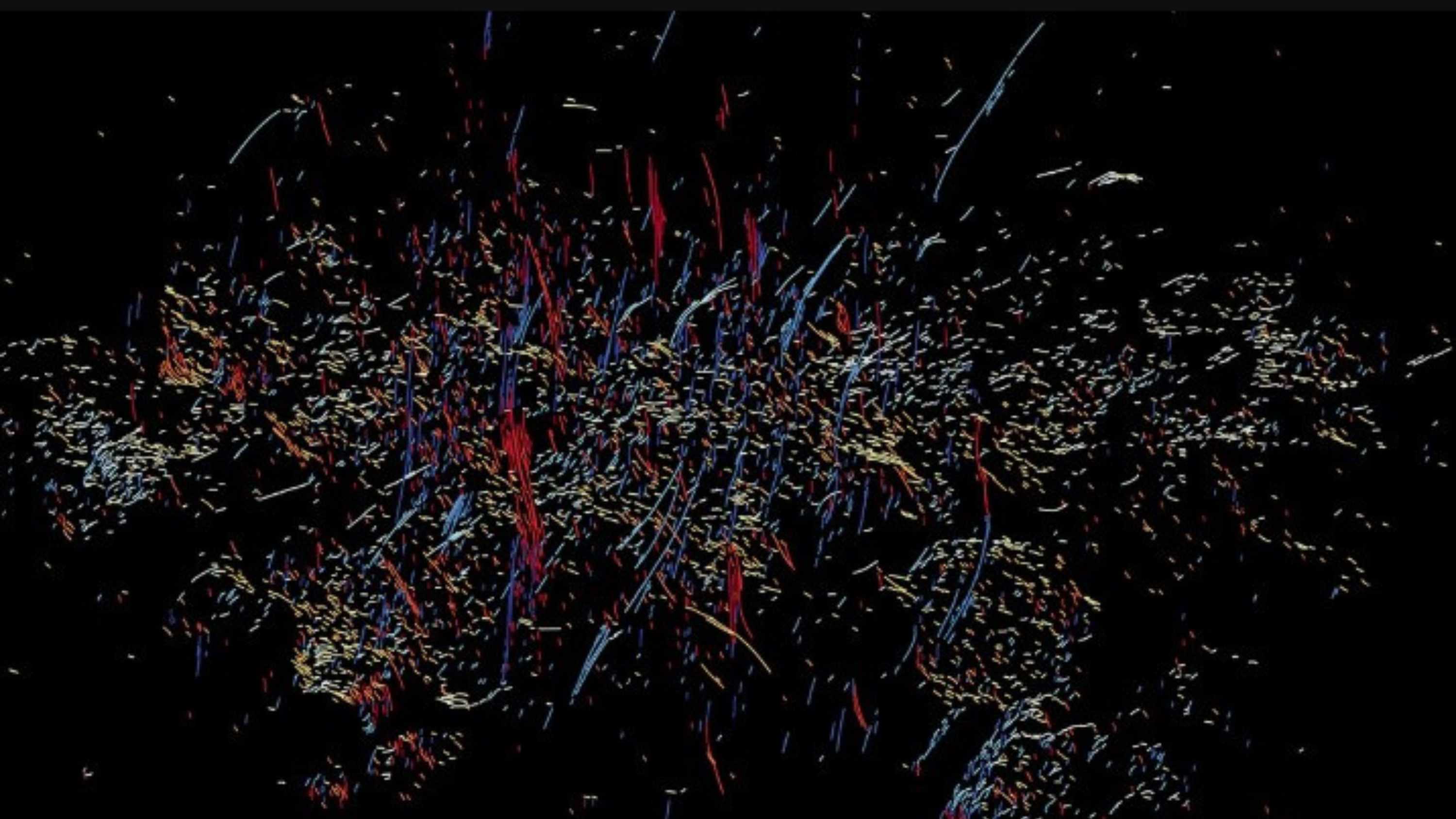(CNN) – An international team of astrophysicists has discovered hundreds of mysterious structures at the center of the Milky Way.
These one-dimensional cosmic filaments are hundreds of horizontal or radial filaments, long, slender bodies of luminous gas that were likely created a few million years ago when the outflow from Sagittarius A*, the Milky Way’s central supermassive black hole, interacted with surrounding material. According to a study published on Friday In Astrophysical Journal Letters.
The threads are relatively short in length. Between 5 and 10 light years each.
The findings come nearly 40 years after Farhad Yousifzadeh, lead author of the study, and other researchers discovered another group of about 1,000 much larger, erect, one-dimensional filaments, each up to 150 light-years across, near the Sun. from the galaxy.
Yousefzadeh and his collaborators also found hundreds of other vertical filaments converging and clustering in the same region in 2022, realizing that these filaments are likely related to Sagittarius A* activity and not supernova explosions, as previously thought. The new study reinforces and expands on previous findings.
Finding “a new set of structures that seem to point in the direction of the black hole” came as a surprise, Yousefzadeh, a professor of physics and astronomy at Northwestern University’s Weinberg College of Arts and Sciences, said in a press release. ..
An image from the MeerKat telescope of the South African Radio Astronomy Observatory shows the fuzzy filaments in the center of the Milky Way galaxy. (Credit: Northwestern University)
“The truth is, I was shocked when I saw them. We had to work a lot to make sure we didn’t fool ourselves,” added Yousefzadeh, who is also a member of the Center for Interdisciplinary Research and Exploration in Astrophysics. “We found that these filaments are not random, but seem to be related to the outflow from our black hole… It is satisfying when one finds order in () the middle of a chaotic field at the heart of our galaxy.”
The study, said Erika Hamden, an associate professor of astronomy at the University of Arizona who was not involved in the study.
Sagittarius A* “is the closest supermassive black hole to us, but it’s relatively quiet and therefore difficult to really study,” Hamden added. “But this work provides evidence that it recently released a great deal of energy into space in the form of a cone-shaped jet and outflow.”
More information about the Milky Way
The researchers found the structures by analyzing images produced by the South African Radio Astronomy Observatory’s MeerKAT telescope, which contains 64 satellite dishes each about 20 meters high and connected more than 8 kilometers from a sparsely populated area with minimal interference. .
“Meerkat notes have been a game-changer,” Yousefzadeh says. “It really is a technical feat for radio astronomers.”
Despite the similarities between the newly discovered hyphae and those identified in 1984, the authors of the new study don’t think the populations share exactly the same traits.
The vertical filaments lie perpendicular to the galactic plane, while the horizontal filaments are parallel to the plane and point radially toward the black hole, according to the press release. Vertical filaments surround the core of the Milky Way, but horizontal filaments appear to extend out to the side, toward the black hole.
“The distribution and alignment of the filaments can help show how materials moved and deformed in the past,” Hamden said.
Their behavior varies, too: the horizontal filaments, the authors write, emit thermal radiation and matter associated with molecular clouds partially or fully embedded in the black hole’s outflow. Molecular clouds are composed of gas, dust, and stars. On the other hand, the vertical filaments are magnetic and contain cosmic ray electrons that move at nearly the speed of light.

“Proud web fanatic. Subtly charming twitter geek. Reader. Internet trailblazer. Music buff.”




:quality(85)/cloudfront-us-east-1.images.arcpublishing.com/infobae/SXDWOIO7O5FMZOWUATFEXQYWTY.jpg)


More Stories
Astronauts stranded in space due to Boeing spacecraft malfunction won’t be able to return home for weeks
Download YoWhatsApp Plus 2024 Latest Updated APK for Android | WhatsApp Plus APK
What was it like to spend a year on NASA’s Mars simulation base?